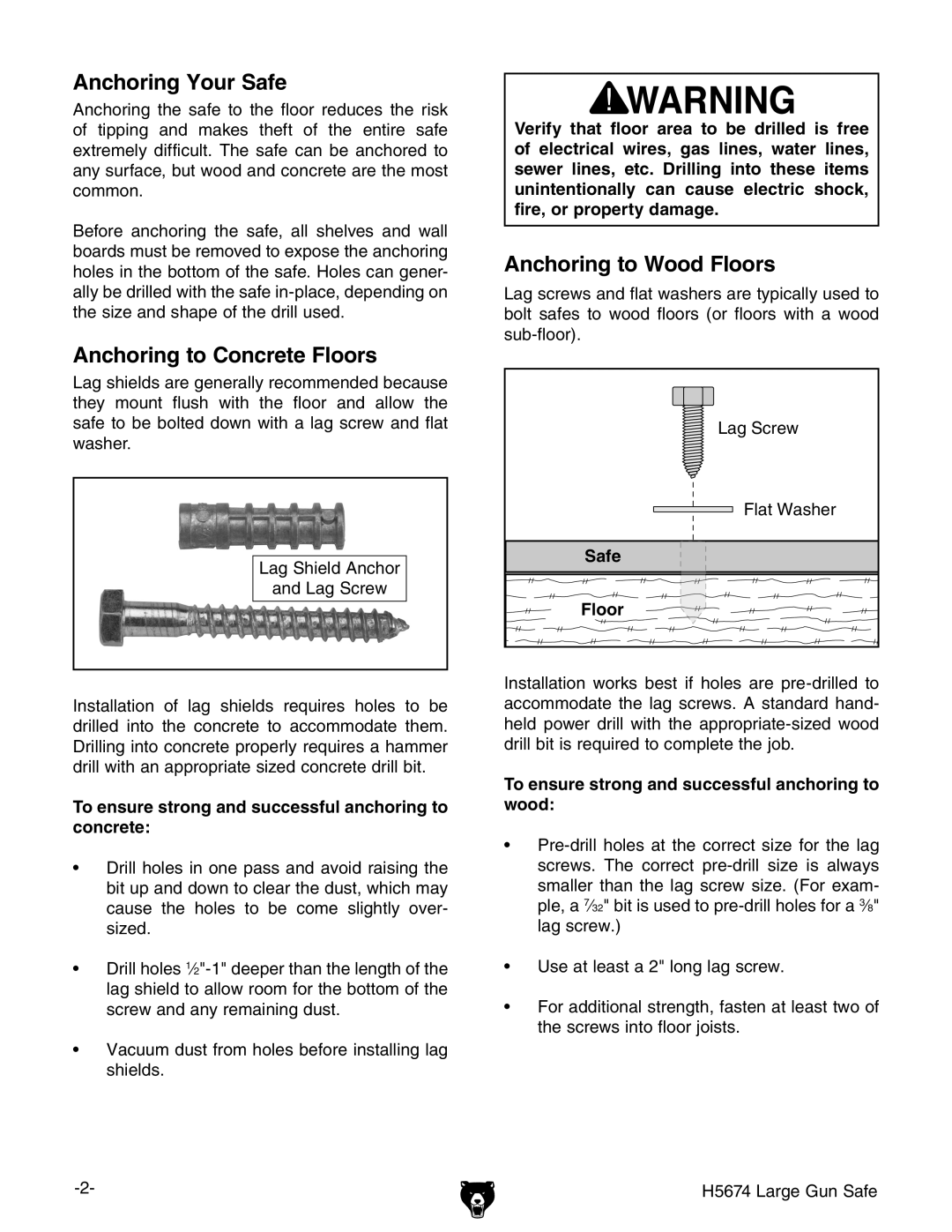
Anchoring Your Safe
Anchoring the safe to the floor reduces the risk of tipping and makes theft of the entire safe extremely difficult. The safe can be anchored to any surface, but wood and concrete are the most common.
Before anchoring the safe, all shelves and wall boards must be removed to expose the anchoring holes in the bottom of the safe. Holes can gener- ally be drilled with the safe
Anchoring to Concrete Floors
Lag shields are generally recommended because they mount flush with the floor and allow the safe to be bolted down with a lag screw and flat washer.
Lag Shield Anchor
and Lag Screw
Verify that floor area to be drilled is free of electrical wires, gas lines, water lines, sewer lines, etc. Drilling into these items unintentionally can cause electric shock, fire, or property damage.
Anchoring to Wood Floors
Lag screws and flat washers are typically used to bolt safes to wood floors (or floors with a wood
Lag Screw
Flat Washer
Safe
 Floor
Floor
Installation of lag shields requires holes to be drilled into the concrete to accommodate them. Drilling into concrete properly requires a hammer drill with an appropriate sized concrete drill bit.
To ensure strong and successful anchoring to concrete:
•Drill holes in one pass and avoid raising the bit up and down to clear the dust, which may cause the holes to be come slightly over- sized.
•Drill holes
•Vacuum dust from holes before installing lag shields.
Installation works best if holes are
To ensure strong and successful anchoring to wood:
•
•Use at least a 2" long lag screw.
•For additional strength, fasten at least two of the screws into floor joists.
H5674 Large Gun Safe
